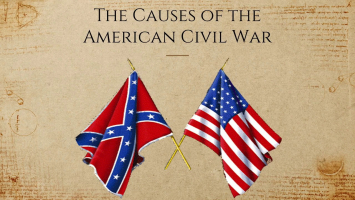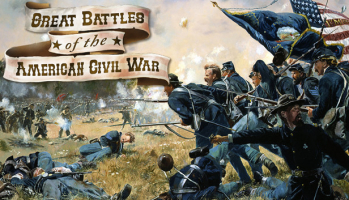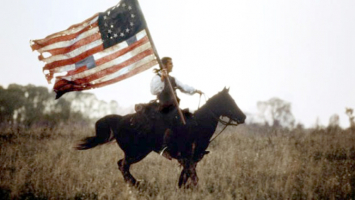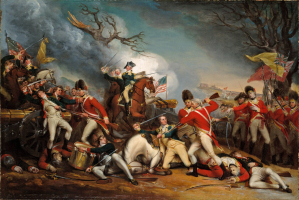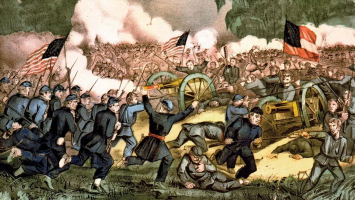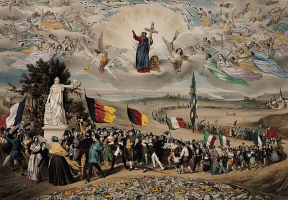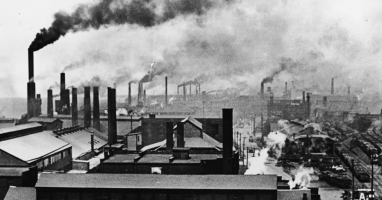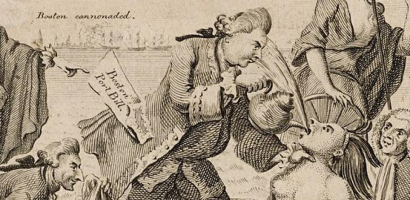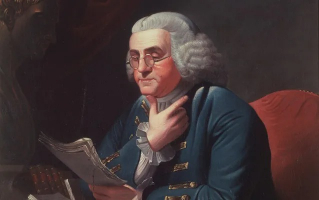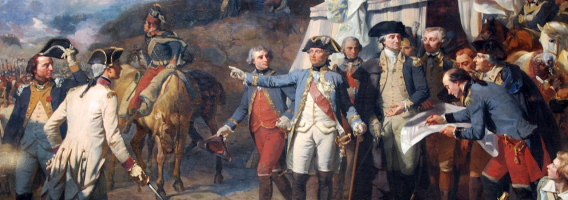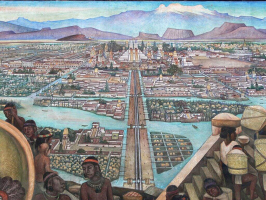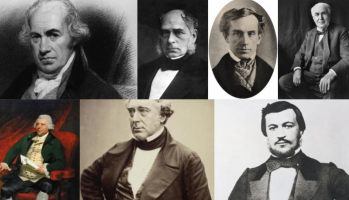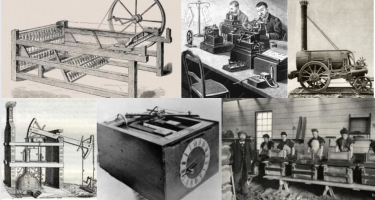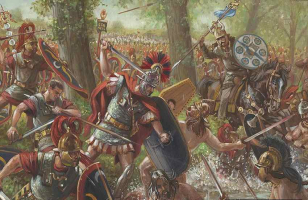Top 10 Major Effects of the American Civil War
The Confederate States of America, which consisted of 11 Southern states that had seceded from the Union, battled against the Union forces from April 12, 1861, ... read more...until May 9, 1865. With an estimated 600,000 to 800,000 fatalities, the Union soldiers ultimately prevailed in what is still the worst conflict in American history. One of the most significant moments in American history is the Civil War. It had several significant effects that had a profound and long-lasting effect on the country. So let’s check the major effects of the American Civil War are listed below!
-
Between 600,000 and 800,000 people are believed to have died during the American Civil War, which continues to be the worst conflict in the nation. Compared to World War 2, the war claimed nearly half as many American lives, and it also claimed five to six times as many deaths as World War 1. The bloodiest battle, with about 50,000 casualties, was the Battle of Gettysburg, which was followed by the Battles of Chickamauga and Spotsylvania. The major cause of death was illnesses, infections, and accidents. Hospitals that were overcrowded and unsanitary housed injured soldiers. The war with the biggest loss of life in U.S history, which is one of the major effects of the American Civil War.
The Minni Ball rifle rounds of the widely used British Enfield and American Springfield rifles during the conflict were responsible for the worst wounds. Prisoners frequently died of malnutrition or blatant negligence in Union and Confederate institutions due to the appalling conditions there. Prisoners of the notorious Camp Sumter detention camp in Georgia were called "walking skeletons." Of the 45,000 prisoners housed there, Camp Sumter claimed the lives of about one-fourth of them.
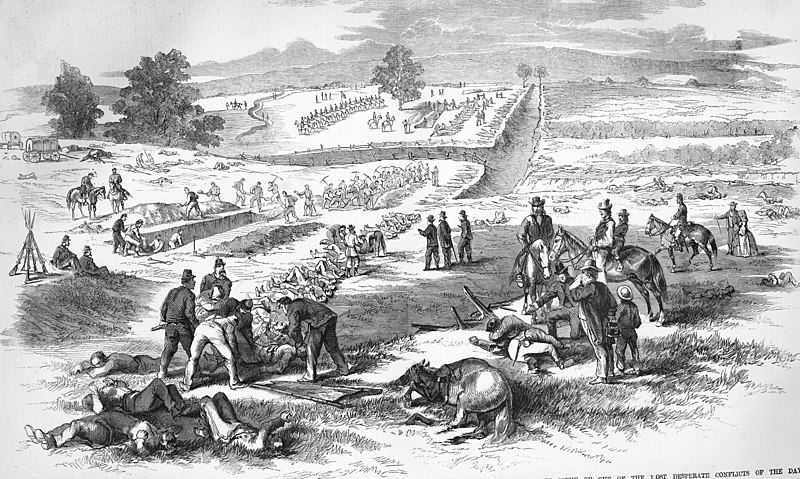
Photo: https://simple.wikipedia.org/ 
Photo: https://gatdaily.com/ -
The 13th, 14th, and 15th amendments to the United States Constitution were ratified between 1865 and 1870, five years after the Civil War. These amendments, which dealt primarily with the issues of African Americans, people of color, and slavery, were added more than 60 years after the 12th amendment of 1804. The amendments are also known as the Reconstruction Amendments because they were crucial in the post-Civil War reconstruction of Southern America.
Slavery and forced labor were outlawed by the Thirteenth Amendment to the United States Constitution, except for punishment for crimes. It was approved by the US Senate on 8 April 1864, and on 18 December 1865, it was incorporated into the US Constitution.
The Southern States, in particular, fiercely opposed the Fourteenth Amendment. The Federal Constitution was amended on July 20, 1868, stating that all people born or naturalized in the United States, including African Americans, are American citizens.
Due to their "race, color, or former condition of servitude," the federal and state governments were forbidden by the Fifteenth Amendment from denying citizens the right to vote. On February 3, 1870, it was ratified and included in the Federal Constitution.
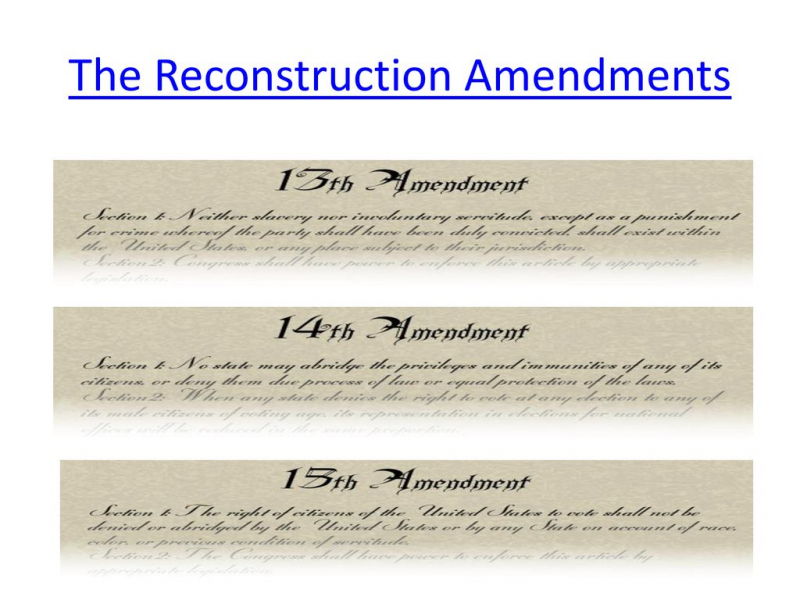
Photo: https://slideplayer.com/ 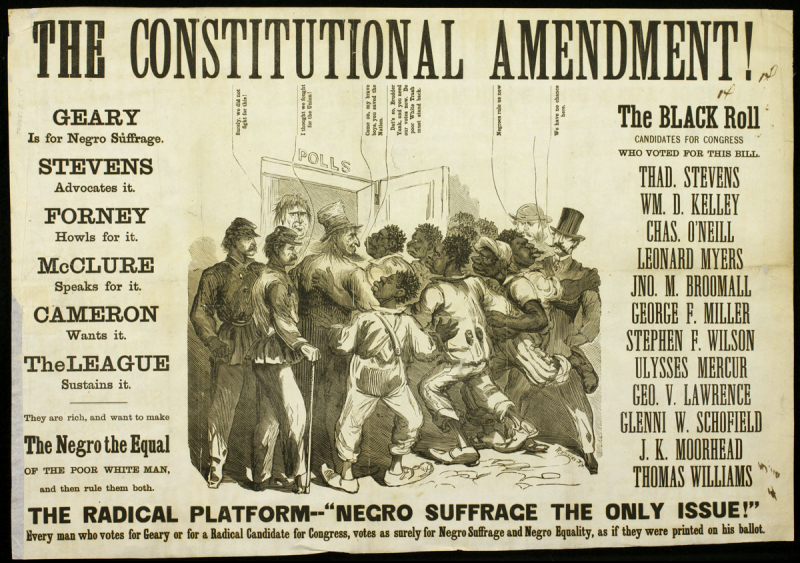
Photo: https://librarycompany.org/ -
One of the major effects of the American Civil War is the division of Virginia. Virginia's Richmond convention voted on the Ordinance of Secession to leave the Union on April 17, 1861. However, a large number of delegates from Virginia's western counties opposed the notion. A meeting of these delegates was held at Clarksburg shortly after the ordinance was passed, and they suggested that each county in northwest Virginia send delegates to a convention that would be held in Wheeling.
Three conventions were held as a result at Wheeling in May, June, and July of 1861, and the "Restored Government of Virginia" was established, giving legal support to the creation of a state inside another. This indicated that there was a time when both the Confederacy and the United States had governments claiming to represent all of Virginia. The politics persisted for some months after that. Finally, in 1862, President Lincoln authorized the creation of West Virginia, which became the only state created by seceding from a Confederate state and became a state on June 20, 1863.
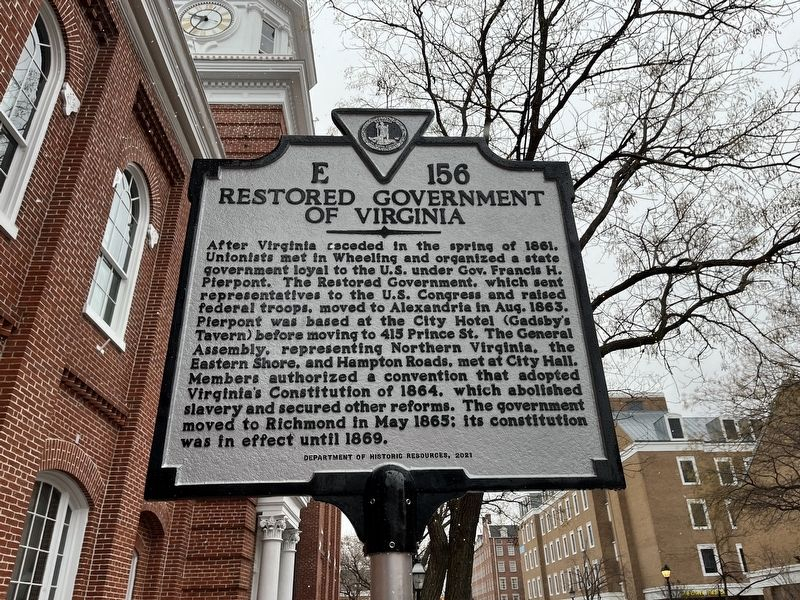
Photo: https://www.hmdb.org/ 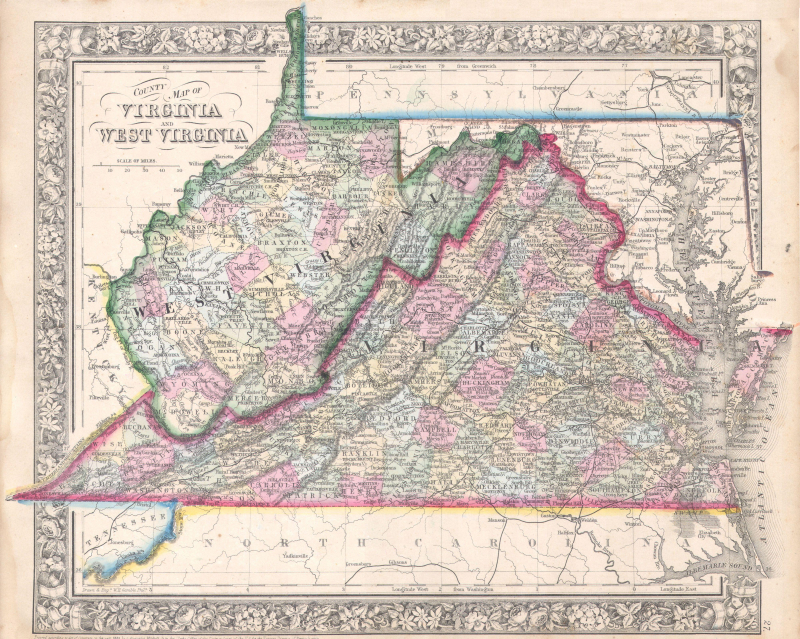
Photo: Division of Virginia -
The Civil War was nearing its end when Robert E. Lee submitted to Ulysses Grant at Appomattox Court on April 9, 1865. Maryland-born John Wilkes Booth remained in the North during the Civil War. He was a well-known theatrical performer who supported the Confederacy and thought harshly of Abraham Lincoln. Booth became desperate when his original attempt to kidnap Abraham Lincoln on March 20, 1865, failed and Confederate General Lee submitted to his captors a few weeks later. When Lincoln learned that he would be seeing Laura Keene's critically praised production of "Our American Cousin" at Ford's Theatre in Washington, D.C., he devised a cunning scheme to assassinate three important Union leaders and destabilize the government.
On April 14, 1885, at 10:15 p.m., John Wilkes Booth crept up behind Lincoln and shot him in the back of the head with a 44-caliber single-shot derringer pistol. Then, after leaping onto the stage, he escaped. Lewis Powell's attempt to assassinate Secretary of State William H. Seward and George Atzerodt's attempt to assassinate Vice President Andrew Johnson were both unsuccessful. On April 26, Booth was shot to death because he refused to give up. On July 7, 1865, his co-conspirators were hanged after being found guilty of their involvement in the murder.
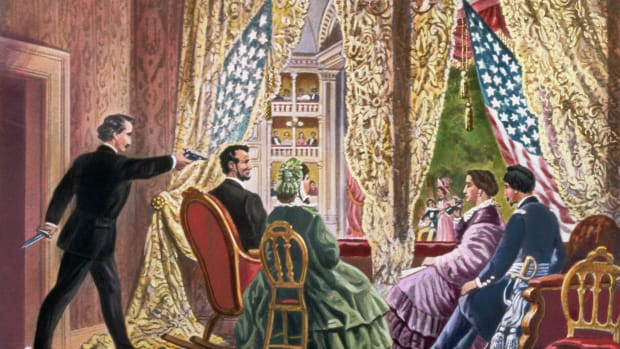
Photo: The assassination of Abraham Lincoln 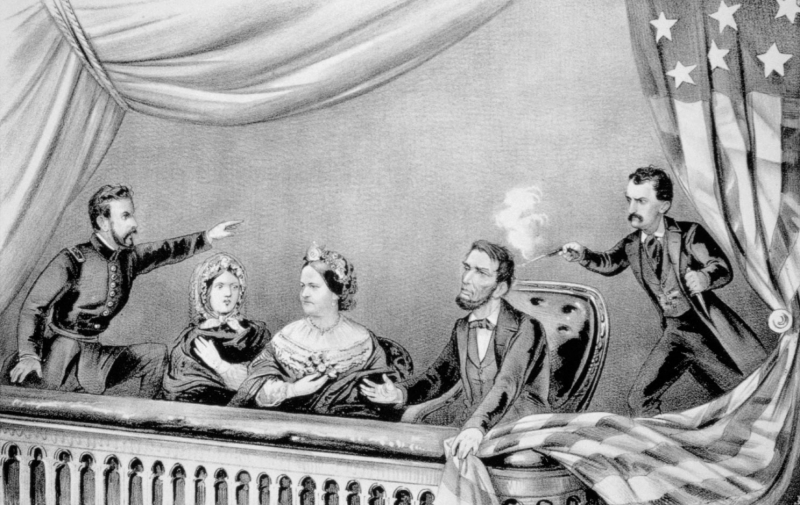
Photo: https://www.historyonthenet.com/ -
As a lawyer and politician, Abraham Lincoln was aware that the constitution maintained slavery in the states where the populace appeared to favor it, even though he believed it to be a repugnant evil. Lincoln stated that he had "no purpose, directly or indirectly, to interfere with slavery in the States where it exists" in his first inaugural address. The political landscape started to shift with his election as president, the Secession Crisis, and the Civil War. The Union experienced some disheartening defeats in the early months of 1862 after a string of successes. Although they were not directly active, the South's sizable slave population was nonetheless assisting the locals in several other ways. The case for emancipation as a necessary military measure was gathering support. Lincoln called a meeting of his cabinet to debate the Emancipation Proclamation in the middle of 1862. However, as the Union soldiers were being routed, William H. Seward, Lincoln's secretary of state, convinced him to delay issuing the proclamation. The quick action, according to Seward, would appear to be a desperate measure.
At the Battle of Antietam on September 17, 1862, Union soldiers forced the Confederates to retire. Rather than military success, the North achieved a tactical and moral triumph. Lincoln sent a preliminary warning that he would decree the emancipation of all slaves in any state that did not put an end to its rebellion against the Union by January 1, 1863, five days later, on September 22, 1862. On the historic day of January 1, 1863, the proclamation went into force, allowing 3.1 million of the 4 million slaves in the country to be freed. The fact that slaves held in the border states of Delaware, Maryland, Kentucky, and Missouri were not freed under the new law is important. Lincoln feared that if all slaves were granted universal emancipation, these states would break away from the Union and join the Confederacy.
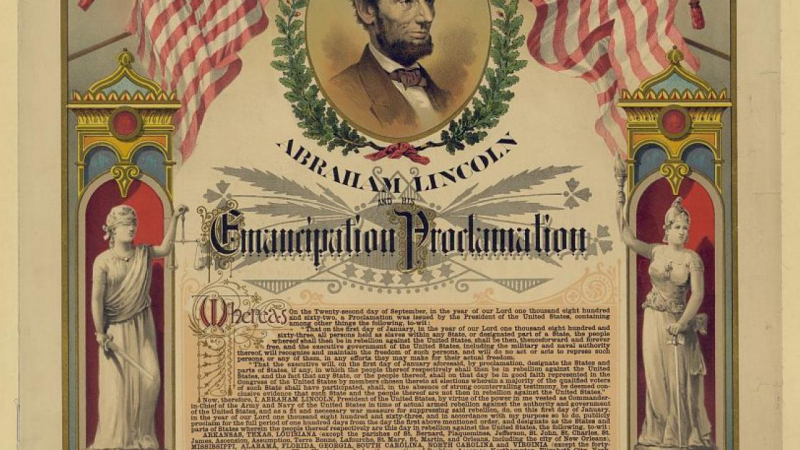
Photo: https://www.battlefields.org/ 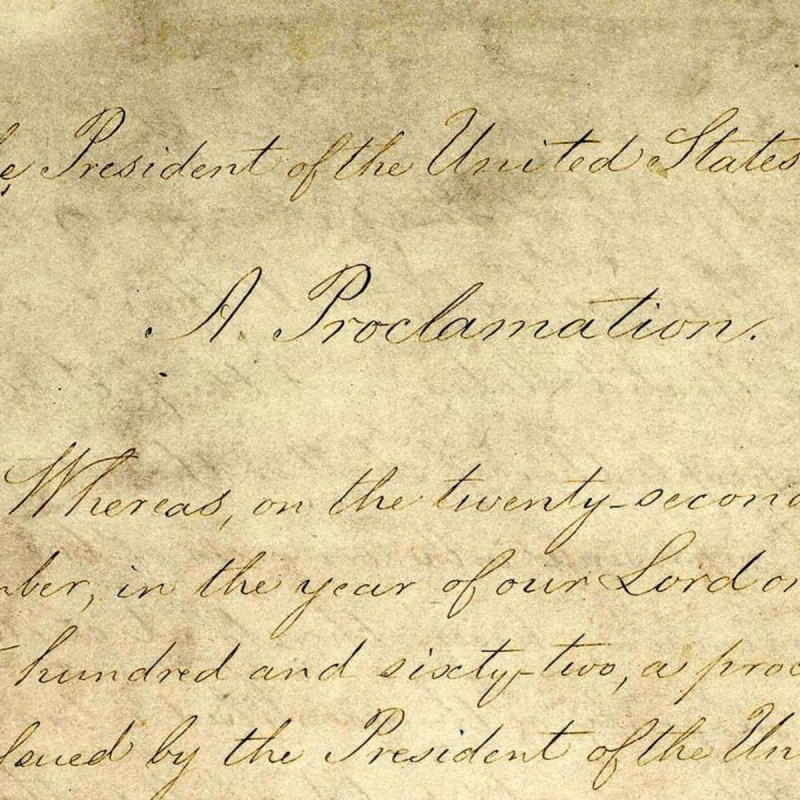
Photo: https://www.history.com/ -
The South's pre-war economic, social, and political position broke down as a result of its defeat. The majority of Confederate military and political leaders were temporarily barred from taking part in politics, which resulted in a power vacuum. This also prompted the rise of two disparagingly named factions known as Carpetbaggers and Scalawags. It is also one of the major effects of the American Civil War.
Scalawags, a term used to describe native white Southerners who backed the federal rebuilding plan and worked with the blacks, were considered to be useless livestock. Most of them were modest Unionist farmers, merchants, and other professionals who did not own slaves and had supported the Union throughout the Civil War. Despite being despised in the South, the Scalawags made up close to 20% of white voters and had significant power, especially after the Civil War.
A poor traveler who only has a carpetbag when they arrive is referred to as a "Carpetbagger" because they take advantage of their surroundings to gradually fill up their bags. The word was used to refer to the white Northerners who relocated to the south following the Civil War, either for financial gain or ideological reasons. There were a lot of educated middle-class carpetbaggers from different backgrounds. They viewed themselves as reformers and sought to recreate the North in the post-war South. The southerners despised carpetbaggers as low-class, opportunistic immigrants looking to profit from their misfortune.
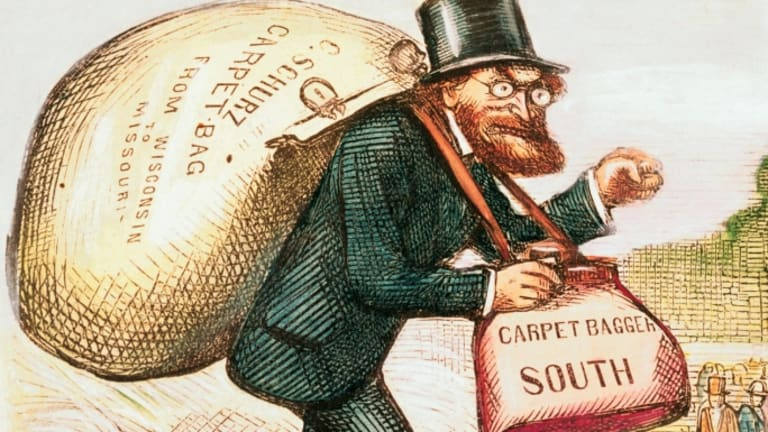
Photo: https://www.history.com/ Photo: https://www.youtube.com/ -
There were numerous discussions on how the former Confederate states might re-join the Union after the civil war. There was an attempt to change the 11 Confederate States that had broken away from the Union in some ways. Following his murder, Andrew Jackson, the next president, intended to continue Abraham Lincoln's mild Reconstruction policy. However, the more extreme Republicans and strong anti-slavery organizations were dedicated to equal rights for Blacks who had been freed and supported harsher measures. These organizations played a significant role in creating the Reconstruction Acts.
Ten rebel states were divided into five military districts under the terms of the first bill, and each district was tasked with creating a new constitution that would be approved by the US Congress. In 1867–1868, three further acts were approved that dealt with how the new state constitutions would be drafted and adopted.
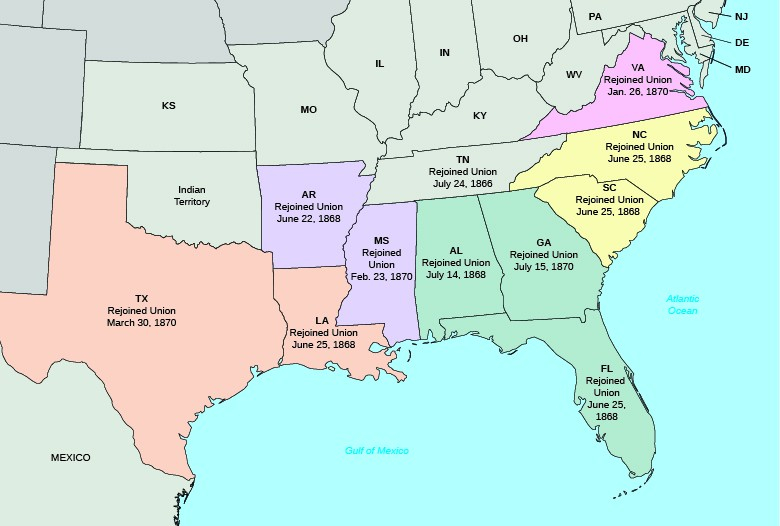
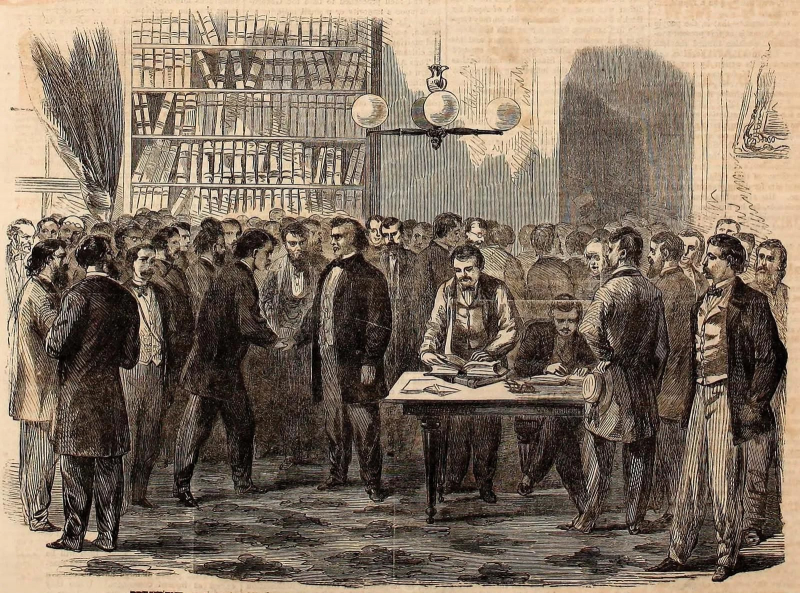
Photo: https://www.britannica.com/ -
The years from 1865 (the end of the Confederacy) to 1877, known as the Reconstruction Era, was the immediate aftermath of the American Civil War. After the war, the south was in shambles and refused to ally with the Union. During the Reconstruction Era, numerous bills and laws were passed to reintegrate the South into the Federal system. During this time, the Republican Party rose to prominence and significantly altered southern society and culture. There were more riots and acts of violence directed against black populations, as well as the emergence of numerous racist organizations.
With a majority in Congress thanks to the 1866 election, the Republicans were able to pass the 14th Amendment, improving the rights of African Americans and restricting the authority of former Confederates. In 1868, radical republican and civil war veteran Ulysses S. Grant won the presidency. To prevent violence against African Americans, he improved Washington's legal ability to step in and defend their citizenship rights. However, Republican candidate Rutherford Hayes bargained with southern political figures in the 1876 presidential election to win. The end of the Reconstruction Era was signaled by the withdrawal of federal forces in 1877.
In the years to come, new racial institutions would deny black people the right to vote and keep them confined to low-paying jobs in agriculture and households. As a result, reconstruction is largely thought to have failed. The Civil Rights Movement, commonly referred to as the "Second Reconstruction," would bear fruit nearly a century after the Reconstruction Era's seeds were first placed in the constitution.
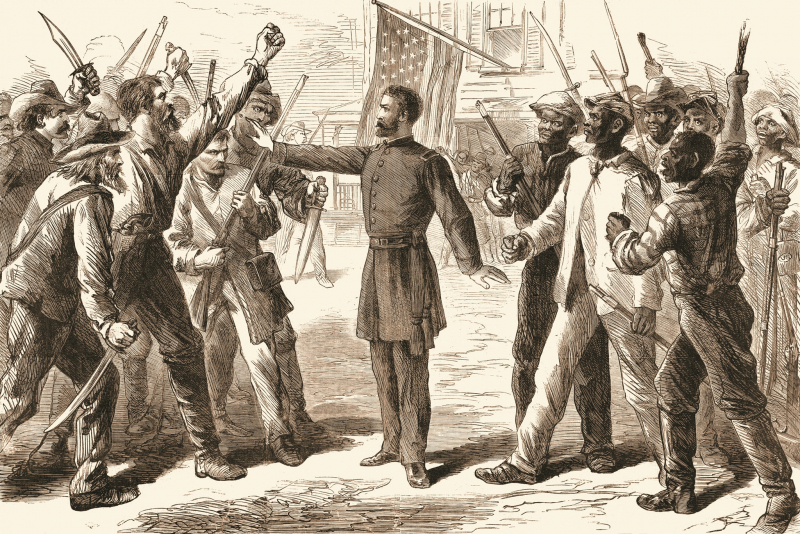
Photo: https://washingtonmonthly.com/ 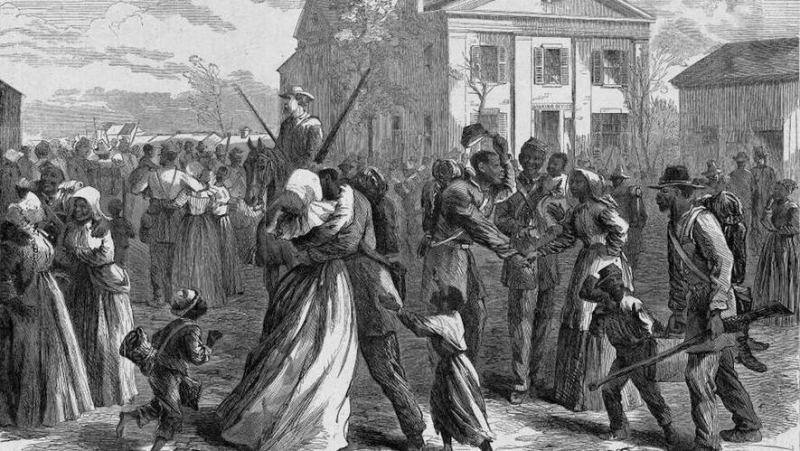
Reconstruction in the South - Photo: https://newsela.com/ -
The North was more industrialized before the Civil War, whereas the Southern economy predominately depended on cotton and other cash crops. Years of policy stagnation have resulted from the two countries' political disagreements. Strong Southern opposition and their political and economic influence drove the North to postpone and compromise on their economic goals.
The Morrill Tariff of 1861, which raised import tariffs in the United States to promote rapid industrial growth, and the Transcontinental Railroad Acts, which provided federal subsidies in the form of land and loans for the construction of a transcontinental railroad across the United States, were two examples of laws and acts through which the northerners began enacting their way of thinking. These actions, along with numerous others, would help the United States' industrial development. Industrialization in turn sparked the rise of large firms, businesses, and entrepreneurs.
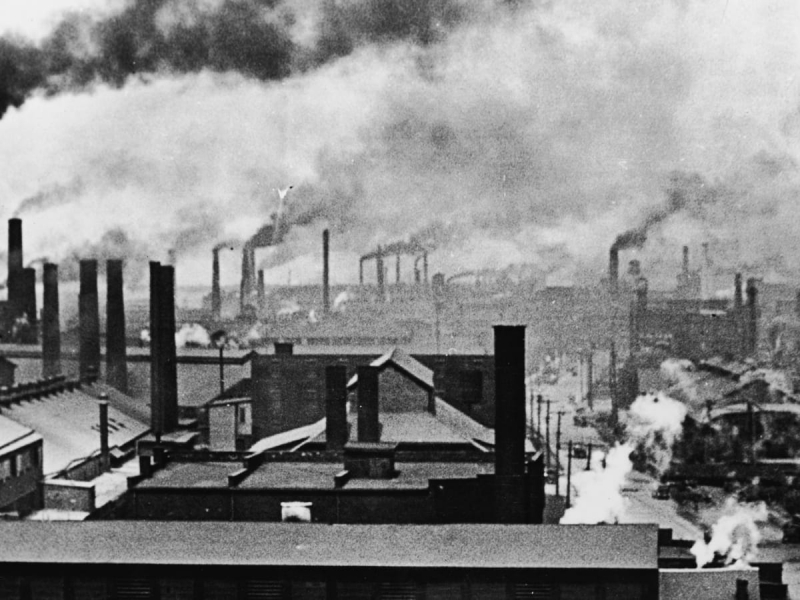
Photo: https://www.history.com/ 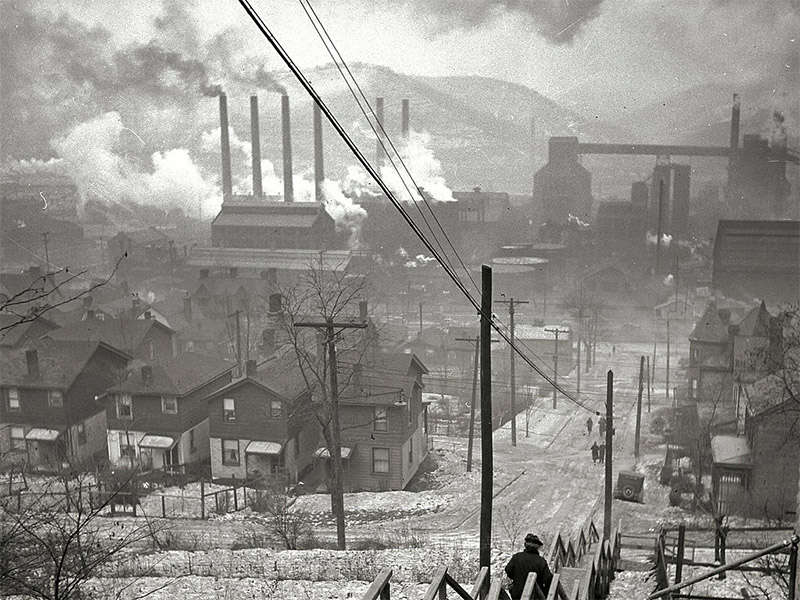
Photo: https://edsitement.neh.gov/ -
Methods were created to get around the Reconstruction rules and oppress the black population when the reconstruction period ended in 1877 and the white southerners started regaining control. These perpetrators went by the name Redeemers. Through the creation of new laws and the distorting of existing ones, they sought to deny black people their civil rights. The statutes earned the moniker "Jim Crow Laws," after a racist comic strip featuring an underprivileged, illiterate black guy.
The laws ranged from being inhumane, such as requiring black people to sit in the back of buses, to insane, such as requiring them to "qualify" to vote by paying poll taxes or by memorizing the entirety of the Declaration of Independence or the Constitution, or the one that prohibited keeping official records of black births, marriages, and deaths in the same books as records of white births, marriages, and deaths. The Civil Rights Act of 1964 and the Voting Rights Act of 1965 ultimately overturned the Jim Crow Laws, which were still in effect as of 1965.
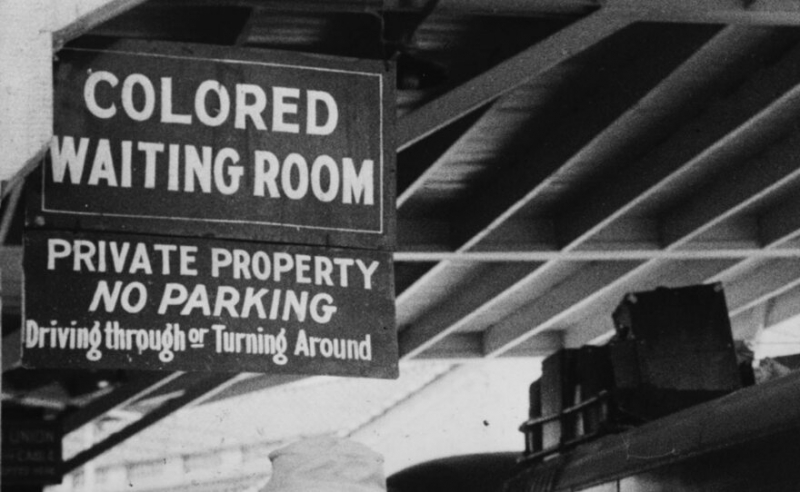
Photo: https://www.wyomingpublicmedia.org/ 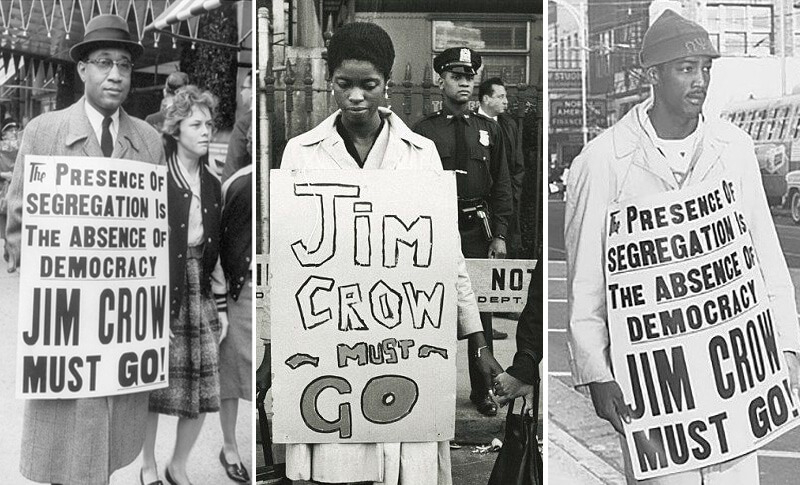
Photo: https://floridahumanities.org/












